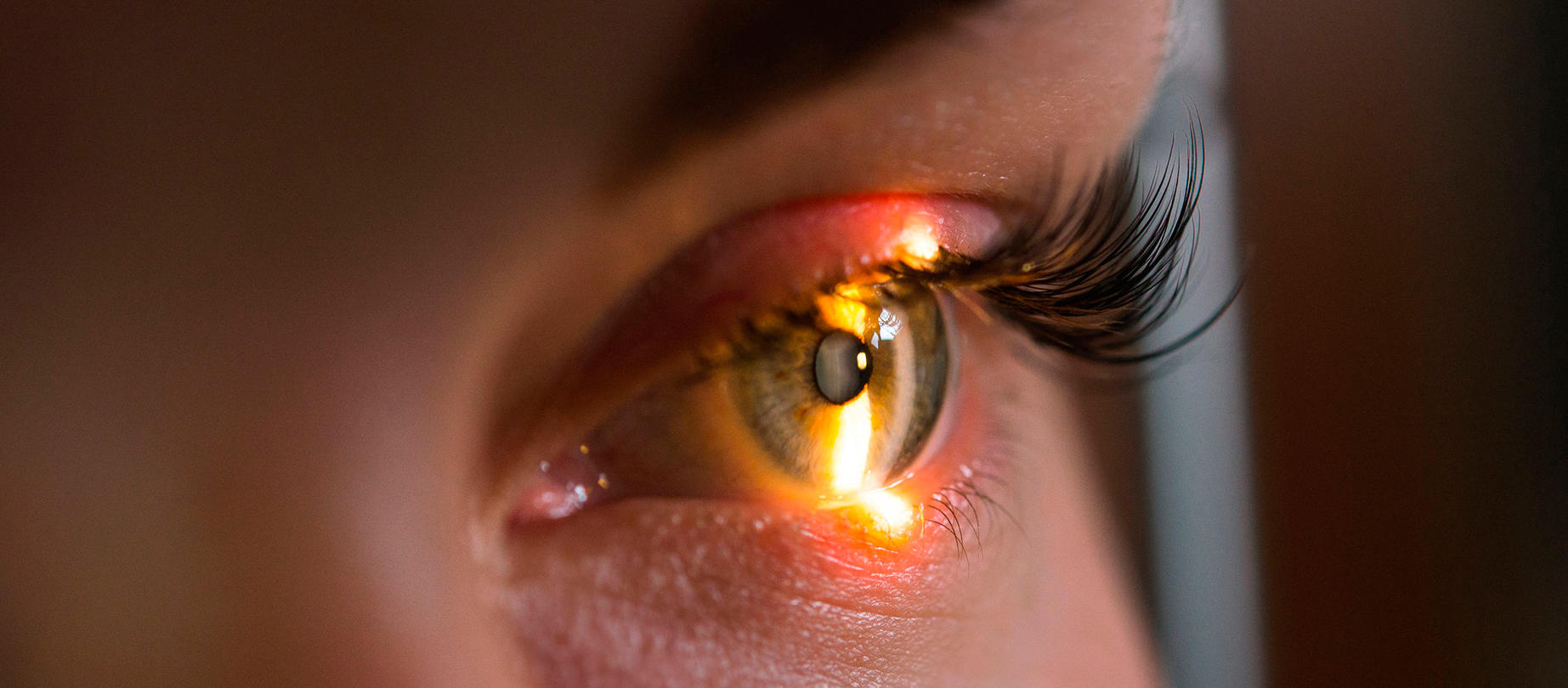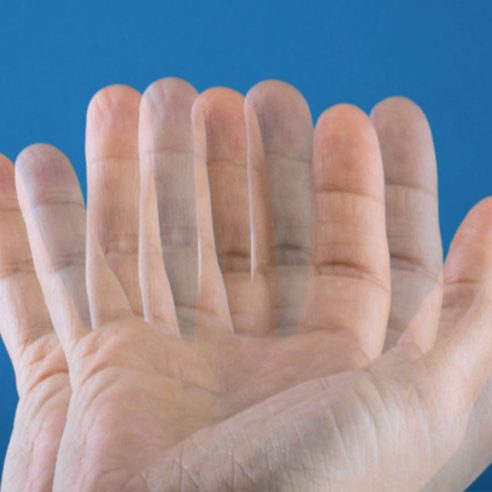
What is Keratoconus?
Keratoconus is a degenerative disease that manifests itself by progressive deformation and thinning of the cornea. It usually appears in adolescence, affects both men and women, and progresses into adulthood. Symptoms include decreased visual acuity, blurred vision, the appearance of cylinder diopters, hyperlacrimation, red eye, pain, and can progress to complete vision loss, when corneal transplant is required. The sooner it is diagnosed, the sooner it can be treated.
- Keratoconus is characterized by thinning of the cornea and the appearance of irregularities on its surface. The middle layer is the thickest part of the cornea, made mostly of water and a protein called collagen. Collagen makes the cornea strong and flexible and helps maintain its regular, round shape. In cases of keratoconus, the cornea thins and swells into an irregular cone shape, resulting in decreased vision.
- Keratoconus generally begins at puberty and progresses in the 30-40 age range. There is no way to predict how quickly the disease will progress or whether it will progress. Keratoconus usually affects both eyes, with one more severely affected than the other.
About cornea
The cornea is the surface layer of the eyeball. It is perfectly transparent and has a dome shape specific to the eye, covering its anterior surface. It comes into direct contact with the tear film and the external environment when the palpebral fissure is open.
The main role of the cornea is to refract light and obtain a clear image. Together with the lens, they are responsible for focusing light on the retina. When light hits the surface of the cornea, it refracts to pass further through the lens. The process is similar to that of a camera (the cornea and lens work as a lens system, while the retina is the image carrier, in the case of the camera, being the film or digital sensor). To maintain this role, the cornea must remain transparent and stable in shape. Any disorder that alters transparency or shape will prevent light rays from passing through to form the image. It is also a barrier against micro-organisms, dust particles or other factors that can damage the eyeball. It is avascular (no blood vessels) and has a laminar structure with layers arranged from the outside inwards.
What symptoms do you experience in case of Keratoconus?
Many keratoconus patients do not know they have the disease. The first symptom is a slight blurring of vision or progressively poor vision, which is not easily corrected. Other symptoms of keratoconus include:
- Glow and halos around lights
- Difficulty seeing at night
- Eye irritation or headaches associated with eye pain
- Increased sensitivity to bright light
- Sudden worsening or distortion of vision
What are the risk factors for Keratoconus?
The definitive cause of keratoconus is unknown, although the predisposition to develop the disease is thought to be present at birth. A common finding in keratoconus is loss of collagen in the cornea. This may be caused by some imbalance between the production and destruction of corneal tissue by corneal cells.
The following causes may increase the risk of developing keratoconus:
- Genetics. Patients with a family history of keratoconus or with certain systemic disorders, such as Down’s syndrome, have a higher risk of developing keratoconus.
- Chronic eye inflammation. Constant inflammation due to allergies or irritants can contribute to the destruction of corneal tissue which can lead to the development of keratoconus.
- Eye rubbing. Chronic eye rubbing is associated with the development of keratoconus. It may also be a risk factor for disease progression.
- Age. Keratoconus is often discovered in adolescence. In general, young patients with advanced keratoconus are more likely to need some form of surgery as the disease progresses.
What types of Keratoconus are there?
There are four main types of keratoconus, in addition to the rarer variations of the disease, including round cone, oval cone, frustule forms and keratoglobus. The shape of the cornea as well as where the cornea has become thinner determines the type of keratoconus. The type of keratoconus must be diagnosed with the help of specialist investigations and ophthalmological examination.
What treatment methods exist for Keratoconus?
In addition to a complete medical history and ophthalmologic examination, your ophthalmologist may perform the following tests to diagnose keratoconus:
- Corneal topography. This is the most accurate way to diagnose early keratoconus and track its progression. With the help of the topographer, a computerized image is made which creates a map of the corneal curve.
- Slit lamp examination. This examination of the cornea can help detect abnormalities in the outer and middle layers of the cornea.
- Pachymetry. This test is used to measure the thinnest areas of the cornea.
- Specular microscopy
- Keratometry
The treatment of keratoconus focuses on correcting vision and depends on the stage of the disease.
After investigations, the specialist doctor will determine how far the disease has progressed, whether it is progressive or stable.
Patients under the age of 40 require treatment as soon as possible.
Patients over the age of 40 require treatment, but the disease is already naturally stabilized with advancing age.
First stages
Treatment for keratoconus in the early stages includes glasses to treat myopia and astigmatism. As keratoconus progresses and worsens, glasses are no longer able to provide clear vision and patients must wear contact lenses, usually hard contact lenses.
Intermediate stages
Progressive keratoconus can be treated with surgery Crosslinking for keratoconus. The method used is photooxidative crosslinking with riboflavin by the transepithelial process, which can be performed in our clinics. This unique procedure involves applying a vitamin B2 solution to the eye, which is then activated by ultraviolet light. The solution causes new collagen bonds to form, recovering and preserving some of the strength and shape of the cornea.
Although treatment cannot make the cornea completely normal again, it can prevent vision from getting worse and, in some cases, improve vision. The procedure may require removal of the thin outer layer of the cornea (the epithelium) to allow riboflavin to penetrate the corneal tissue more easily.
Advanced stages
Corneal ring. In severe keratoconus, standard contact lenses may become too uncomfortable to wear. Intacs are implantable, plastic, C-shaped rings that are used to flatten the surface of the cornea, allowing an improved vision. They can also allow a better fit for contact lenses. The procedure takes about 15 minutes.
Corneal transplant. In a corneal transplant, a donor cornea replaces the patient’s damaged cornea.
References:






























